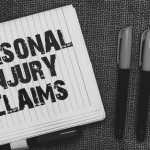One of the things I often hear from people who have been injured, or from family members who have lost a loved one in a tragic incident, is “I never thought I would be sitting here.” Usually, I will ask, “what do you mean by that?”, and the response is often about how they just are not the type of people to bring a personal injury claim/lawsuit. I can understand what they are saying because before I started as a lawyer, I had no idea how devastating an injury or death is on a person, a family, and in some cases a community. In an attempt to help those people going through an injury or death in the family decide if making a claim is for them, I want to go through the stages of a claim/lawsuit.
Stage One: Pre-Lawsuit Portion Of A Claim
Usually, in any case for injury or death due to the negligence of someone else, there is insurance that applies. The first step in any claim is to inform any insurance companies who may be involved in the incident that led to the injury/death. Also, a letter is usually needed to send to responsible parties to preserve the evidence in case of the need for a future lawsuit. This does two things, it allows an insurance company representative to begin their investigation into the case, and second, it preserves evidence that might be necessary down the road. The preservation of evidence is an important reason to contact an attorney sooner rather than later if you think you may bring a claim.
When dealing with an injury, the focus for the injured party should be to get the treatment needed. Depending on the type of incident that led to the injuries, there may be insurance that applies to pay for treatment. For instance, in a car wreck case, your own insurance will be paying for portions of your medical treatment. For a review of how that portion of insurance works, please review past blog articles on how no-fault (PIP) coverage works in North Dakota.
Depending on the severity of the injury, it could take a long time to get to a place where there is a good picture of what your future looks like medically and physically. In North Dakota, for a general negligence case for injuries, the statute of limitations to bring a claim is six (6) years. Therefore, in a lot of severe cases, it may take time to get a better idea of the depth of your injuries and damages. Since there is only one bite at the apple in trying to resolve the case with the other side, it is sometimes best to wait to see how that person recovers or what the future holds before sending a demand for settlement to the insurance company.
Eventually, a settlement demand will be sent to the insurance company for all responsible parties, and the claim may settle. Once a claim settles, it is gone forever, so it is important that people understand the depth of their injuries as well as an idea of the financial burden the injury will place on the person and their families. If the case doesn’t settle, a lawsuit can be initiated.
Stage Two: Lawsuit Prior To Trial
In North Dakota, to bring a lawsuit, a Summons and Complaint must be served on the other person or company who was responsible for the injuries or death. There are time limitations for bringing these suits that can vary from two (2) years to six (6) years. Of course, there are a lot of things that go into what timeframe applies, as well as some exceptions that may extend the time to bring a lawsuit. It is important for a person to contact an attorney early to determine what statute of limitations applies because if it is missed the case is not allowed to be brought, and the person will lose all chance at recovery.
After the Summons and Complaint is served, the other side typically has twenty-one (21) days to respond with an Answer (or Motion to Dismiss). In practice, the insurance company hires an attorney to defend the other person, who then will take the necessary steps to respond to the Complaint.
After there is an Answer in the case, discovery starts. Discovery is the parties’ opportunity to “discover” the evidence in the case. There are many discovery tools available in a lawsuit. Some of the more commonly known methods are subpoenas and depositions. A subpoena is a tool for serving someone who is not a party to the lawsuit with a request to disclose documents or provide testimony. For the testimony portion, depositions allow attorneys to ask questions of parties or non-parties, and it is done under oath before a court reporter. That testimony can in some instances be used at trial, but there many rules that govern whether and when this testimony can be used. Other discovery tools include written discovery to parties, expert witnesses being disclosed, and informal interviews of potential witnesses. If I was to explain how all of the discovery worked, I could write numerous blog articles. There is no “playbook” or “checklist” to discovery, as each case has its own unique facts that require tailored discovery. At some point, the discovery process will be “closed”, meaning no more discovery is allowed and the case should be ready for trial.
Stage Three: Trial
A trial can be before a Judge, or before a jury. For any of our blog followers, jury trials are actually a constitutional right in personal injury cases. Even though most parties have insurance to cover the loss, it is important to remember that the jury is not allowed to know that there is insurance that is going to cover the judgment. The jury will consist of 6 or 9 people, depending on how many the parties request.
A trial in North Dakota State District Court has five (5) phases as well. There is jury selection, opening statements, witness examinations, closing statements, and jury deliberations/verdict. Depending on the complexity of a case, trials can last as little as one (1) day, to months until the full process is complete. After a verdict is announced, there are various post-trial motions that can be entertained by the Court, or either party to the lawsuit has an option to enter stage four (4), appeal.
Stage Four: Appeal
In civil cases for personal injury in the North Dakota District Court, a notice of appeal must be filed with the North Dakota Supreme Court within sixty (60) days from service of the notice of entry of the judgment in the case. After an appeal is timely filed, the other party can file a notice of appeal within fourteen (14) days of the first notice. An appeal has to be based on some claimed error or errors made by the trial Judge on the case. There are many different things that can be appealed in a case, and it is very dependent on the decisions made on evidence or how the case or trial was conducted, or allowed to be conducted. Each case is different, so a review of all the rulings by the trial judge needs to be assessed to determine what issues may be right for an appeal.
After an appeal is filed, generally the record from the trial Court will be gathered, each party will file appellate briefs, and some cases will be set for oral argument. After some time, the Supreme Court will issue an opinion, and depending on the Supreme Court’s holding, the case will either be over or proceed further. In some cases, the case is reversed and sent back to the trial Court for a new trial. In that instance, stage three is started all over again.
Conclusion
In closing, as you can see there are various steps to a claim or lawsuit. Also, the claim can settle at any of these stages, even in the middle of a trial. There are many rules at each stage that apply, so it is important you have an attorney to assist you.
If you or a family member have been injured, and are looking to consult with an attorney, please give the Personal Injury Team a call at 701-297-2890 or send us an email below. All consultations are free of charge, and any case for personal injury is on a contingency fee basis only, meaning we only recover fees if we are able to get you compensation for your harms and losses.










